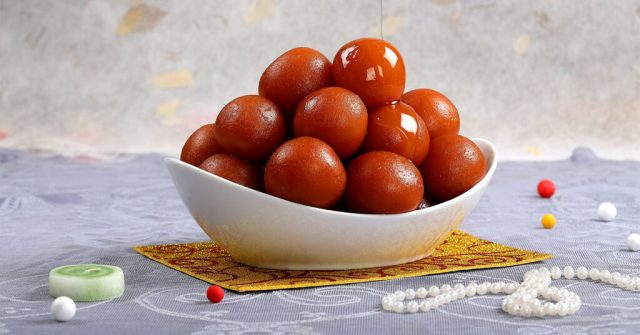 By Dr Brij Mohan Sharma
By Dr Brij Mohan Sharma
In a world where convenience often overrides consciousness, it’s easy to fall into the trap of sweet indulgence without knowing what lies beneath. But every bite we take is a choice—not just for our taste buds, but for our long-term health and the future of our families. This article isn’t about fear—it’s about empowerment. By understanding the hidden dangers of liquid sugar and learning how to spot and replace it, we can reclaim control over what we eat, honour our traditions with wisdom, and choose sweetness that truly nourishes. The path to better health starts with awareness—and that journey begins now.
In today’s rapidly evolving food ecosystem, liquid sugar has emerged as a silent but powerful disruptor—pervasive, potent, and largely misunderstood by the general public. Though it has quietly infiltrated our diets through an array of seemingly innocent items like soft drinks, juices, mithai, biscuits, jams, and sauces, its effects on health are far from subtle. What was once a rare, laboratory-processed ingredient has now become a staple in mass-produced foods, thanks to its low cost, intense sweetness, and functional properties.
Unlike granulated table sugar that requires dissolution during cooking or processing, liquid sugars are already broken down into simpler forms, ready to be absorbed instantly by the body. This ultra-processed nature allows them to blend easily into recipes while enhancing texture, prolonging shelf life, and maintaining visual appeal. But the convenience they offer to manufacturers comes at a grave cost to consumers’ health.
The shift began in the 1960s when High Fructose Corn Syrup (HFCS) was developed in the United States as an economical alternative to cane sugar. Derived from corn starch and enzymatically converted to fructose and glucose, HFCS quickly replaced traditional sugars in the beverage and food industries due to its longer shelf life and stronger sweetening power.
India followed suit in later decades, adapting liquid glucose and inverted sugar syrup into its own sweets, bakery items, and soft drinks. The influence of Western-style processing and packaging crept into even the most traditional food sectors, altering not only how we eat but what our food contains.
There are several chemically engineered liquid sweeteners now prevalent across global and Indian food markets:
- High Fructose Corn Syrup (HFCS): Made from corn starch, partially converted to fructose. It is extremely sweet and found in colas, candies, canned fruits, ketchup, and flavoured milk.
- Liquid Glucose: A thick, viscous syrup derived from starches like corn or wheat. It is used extensively in halwas, barfis, ladoos, ice creams, and bakery fillings.
- Inverted Sugar Syrup: Created by hydrolysing sucrose into glucose and fructose, it is often found in gulab jamun, rasgulla, jams, fruit syrups, and dairy-based sweets for added shine and moistness.
- Agave Nectar, Industrial Honey, and Maple Syrup: Though these appear “natural,” large-scale processing often strips them of nutrients and alters their sugar profile to mimic HFCS.
Despite their varied origins, these syrups all share one trait: they are rapidly digested and devoid of any nutritional benefits, making them particularly dangerous when consumed routinely.
The health risks associated with liquid sugar go beyond mere weight gain. Their rapid absorption overwhelms the pancreas and liver, resulting in insulin spikes, fat storage, and metabolic dysfunction. This not only contributes to type 2 diabetes but also triggers non-alcoholic fatty liver disease (NAFLD)—a condition once rare but now increasingly common even in children.
Liquid sugars—especially fructose-heavy varieties like HFCS—bypass regular digestive pathways and go straight to the liver. In high doses, this leads to lipogenesis, where the liver turns excess sugar into fat, contributing to liver inflammation and damage over time.
Additionally, liquid sweeteners disrupt satiety hormones like leptin and ghrelin, causing individuals to feel less full and overconsume calories. Over months and years, this metabolic confusion fosters weight gain, visceral fat accumulation, and elevated cholesterol levels.
In the context of Indian desserts, liquid sugars have made their way into everything from festive sweets to mass-produced mithai. They help keep sweets moist, glossy, and shelf-stable for weeks. However, these visual and textural enhancements come at a cost.
Traditional sweets made with jaggery or unrefined sugar often appear grainy, dry out sooner, and have a shorter shelf life. In contrast, sweets made with liquid glucose or inverted syrup are unnaturally soft, sticky, and retain moisture far longer. But these qualities often signal a high glycaemic index and poor nutritional value, especially when consumed without dietary fibre or balancing nutrients.
Another underappreciated effect of these syrups is on oral and cardiovascular health. Sticky sugars adhere more easily to the enamel, feeding harmful bacteria and accelerating tooth decay. At the same time, their continued intake contributes to raise LDL cholesterol and triglyceride levels—both markers for increased risk of heart attacks and strokes.
The marketing of agave, maple syrup, and honey as “natural alternatives” is often misleading. When these are processed on an industrial scale, their fructose content rivals that of HFCS. Without the presence of fibre or micronutrients, they too become empty-calorie contributors to the same diseases that refined sugars cause.
While identifying these hidden sugars may require lab tests, there are a few simple signs consumers can watch for:
- Texture: Overly sticky or shiny sweets likely contain moisture-retaining syrups.
- Longevity: Items that stay soft and glossy for many days without refrigeration may be artificially preserved with liquid sugars.
- Freezer Test: Place a piece of sweet in the freezer. If it doesn’t harden completely but remains soft or slushy, it may contain HFCS or glucose syrup.
- Water Dissolution Test: Dissolving a piece in warm water and observing if it turns cloudy or sticky can indicate syrupy content.
As a chemist actively involved in testing food samples from sweets, drinks, and baked products, I’ve frequently identified liquid sugar components—particularly HFCS and glucose syrup—across both branded and local items. These ingredients are often unlabelled or cleverly disguised, making it even harder for average consumers to make informed decisions.
In several instances, traditional looking mithai was found to contain high levels of industrial sweeteners. Such findings highlight a critical need for public awareness and regulatory oversight.
One particularly alarming trend is the consumption of these sugary foods during fasting periods. Ironically, many individuals believe sweets and juices are permissible during fasts. However, these foods provide empty energy without sustenance and often break the very purpose of fasting—which is cleansing and discipline.
I urge individuals who are not consuming grains or meals during fasts to avoid sweets and sugary beverages completely. They can disrupt blood sugar levels and offer no real nourishment.
Children, due to their smaller body mass and developing systems, are even more vulnerable to the effects of liquid sugars. Frequent exposure to syrup-laden sweets and flavoured beverages can accelerate the onset of childhood obesity, insulin resistance, and dental problems. It is imperative that parents restrict such products and replace them with whole fruits, nuts, and traditionally prepared sweets made from jaggery, dates, or dry fruits.
Healthier sweetening alternatives not only reduce risk but often add nutritional value:
- Jaggery (Gur): Rich in iron and antioxidants, it offers a slow release of energy.
- Desi Khand and Mishri: Less refined and closer to natural sugarcane.
- Stevia: A plant-based, zero-calorie sweetener that doesn’t spike blood sugar.
- Fruit Pastes and Purees: Dates, figs, and bananas can sweeten desserts while offering fibre and minerals.
- Honey (Raw, Unprocessed): If used, opt for raw honey in limited amounts and not commercial-grade varieties.
In a culture where sweets are not just food but symbols of love, tradition, and celebration, it’s unrealistic to suggest complete abstinence. However, mindful consumption, label reading, and traditional preparation methods can significantly reduce the health burden caused by hidden sugars.
Public health messaging, school-level nutrition education, and stricter labelling laws are urgently needed to address the threat posed by liquid sugars in everyday diets.
In our race toward convenience, taste, and shelf life, we’ve allowed silent additives like liquid sugar to shape our diets and endanger our health. It’s time to reclaim control through awareness, tradition, and scientific understanding.
Small, mindful decisions—like switching to jaggery-based mithai, avoiding processed drinks, or reading food labels—can ripple into significant long-term benefits. Let’s not sacrifice health at the altar of convenience. Let the sweetness in our lives come from joy, not risk.
(Dr Brij Mohan Sharma is a National Award-Winning Chemist and has been a pioneering force in the field of food quality and adulteration research since 1990.)







